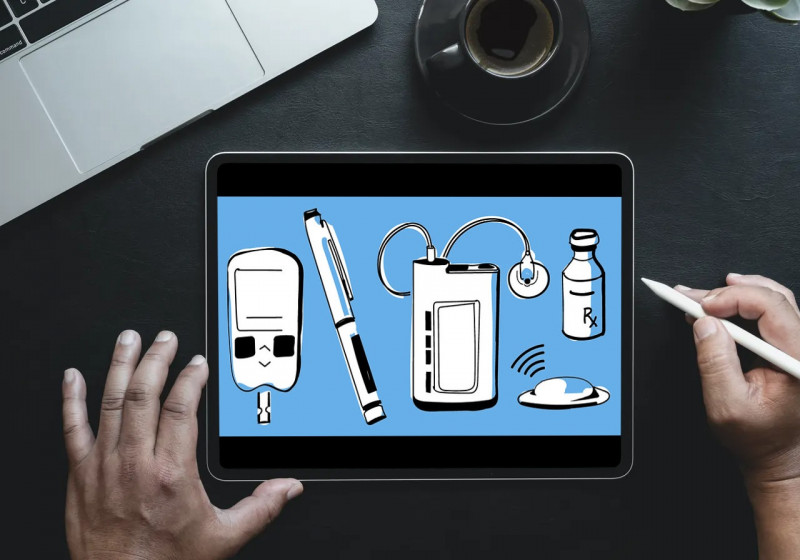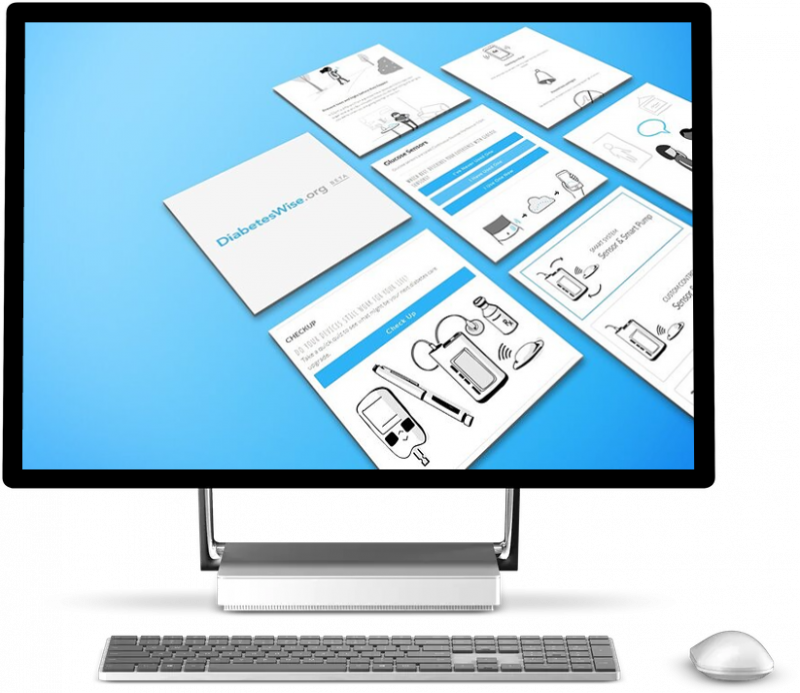Since 2017 UpShift has been part of a Stanford Medical School project called “DiabetesWise”. The project’s aim is to encourage people living with diabetes to use devices to manage their blood sugar levels & insulin delivery. UpShift has been developing a set of digital tools to inform & help decision making.
The end of February 2020 saw a major milestone with the DiabetesWise web app going to medical trial. How we got from a proof of concept in late 2017 to medical trial in early 2020 has been an interesting journey I’d like to share with you.
But first some background: 5 years ago my son was diagnosed with Type 1 Diabetes (T1D) when he was 3½ years old. T1D is an autoimmune condition where the body’s immune system permanently destroys the pancreas’s ability to produce insulin.
Without insulin there is no mechanism for the body to absorb glucose as energy, simultaneously poisoning & starving the body. T1D has only been treatable for the past 100 years, before that it was fatal in almost all cases. It is not an easy condition to manage & stressful for people who live with T1D & their caregivers.
The first devices for managing diabetes were invented in the early 1970s & were the size of a microwave oven. Thankfully we have made a lot of advancements since then, with most modern devices weighing less than a smartphone.
The most common device types are blood glucose monitors which check blood sugar levels & insulin pumps which administer insulin doses. Technology advances can connect these devices into “closed loop” which automatically checks blood glucose & administers the correct insulin doses to keep blood glucose at healthy levels.

Left to Right: A blood glucose reader, an insulin pen, an insulin pump, a blood glucose sensor & a vial of insulin.
For someone who is dependent on insulin, trying to work out what devices to use can be a confusing & overwhelming experience. Not only is there a variety of devices to choose from, but they can be paired in different combinations which all have pros & cons. The cost of devices also makes them a major commitment to either self fund or claim through the health system/ insurance.
While the devices can cost thousands of dollars research has shown the cost of managing diabetes with devices is less than the cost of non-managed diabetes. Non-managed diabetes can lead to a number of serious health issues which can be avoided.
DiabetesWise came out of previous studies looking at ways that insulin dependent people could improve their health & how to enable them to get there. Removing hurdles around device usage was identified as a significant way to improve health outcomes & DiabetesWise was created.
In late 2017 UpShift was approached by Sara Krugman & Brian Hoffer - two design consultants who were working on the DiabetesWise project & looking for a development partner to fast prototype their design ideas.
To be honest I was very excited by the project - it is a fantastic combination of technical challenge, making positive change & tackling an issue that’s very close to my heart. So I turned around a proof of concept & together with Stanford we took it forward from there.
The initial development went through a number of iterations. We started by using Google Sheets as flexible data storage feeding into a Squarespace based interface with custom Javascript taking care of the interactivity.
Having the flexibility of Google Sheets & Squarespace allowed Sara & Brian to work on the design/ user experience without having to rely on us to make code changes for minor changes.
As the project evolved the interfaces were taken through a number of rounds of user testing which resulted in reworking/ refining the interfaces & supporting data.
The DiabetesWise team are a fantastic group of people including expertise in diabetes, medicine, psychology, clinical research, design, user experience & technology. Having all of these bases covered was really valuable during the feedback cycle.
Each iteration of development went something like this:
-
Visual design of Interface created/ amended from user testing & feedback.
-
Data source/ model altered to reflect interface design.
-
Interface code developed to reflect interface design.
-
Testing in DiabetesWise team.
-
More user testing & feedback.
-
Back to step one.
While I’m a big fan of this approach it should be noted that each iteration should be a refinement, rather than a major rework. Constantly tearing something down & rebuilding it isn’t efficient or effective. Our iterations were very much around refinement, which helped the project move forward.

Storyboarding was part of the prototyping process.
The initial phase of DiabetesWise involved developing an easy check-up which returns broad device recommendations & wisdom of other T1D community members. Early feedback reinforced the importance of people’s stories & experiences as a way of communicating the realities of devices use & insulin dependency.
This phase is in beta & can be explored at: diabeteswise.org
As the project advanced we moved the data source from Google Sheets to Airtable. Airtable gives more functionality but is still flexible enough to allow for easily customisable data. For the interface development we shifted to Vue.js for handling interactivity.
The next phase was to give more detailed device recommendations - right down to which model of glucose sensors work best with which model of insulin pump. Device combinations could be browsed, filtered & explored based on a person's priorities & requirements. This required taking a huge amount of complex data & turning it into accessible wisdom that anyone could understand.
Once the prototyping was completed we created a custom content management system (CMS) to take the place of Airtable. Building a CMS made editing the content easier, more secure & more reliable. It also allowed us to plan for future requirements.
In late 2019 we started to prepare DiabetesWise for a medical trial - where the experiences & outcomes of DiabetesWise could be assessed at the highest level.
I won’t go into detail but suffice to say if you want to apply a large amount of rigorous discipline to a project, prepare it for a medical trial. Many questions were asked & each needed an answer. From developing industrial strength privacy protection for health data, to connecting to research systems, to how to handle situations that could interfere with analysing user experiences.
All trials must go through a review process & I’m pleased to say DiabetesWise was given the go ahead at the end of February 2020. The trial has started & data is already being collected, while we’re months away from finishing the trial it’s very exciting to see it in motion.
It’s been a really interesting experience to be part of taking a project from a concept through to the rigor of preparing for a medical trial. Hindsight is a wonderful thing & I would have done a few things differently if I’d known where we were heading. The biggest change I would have made would have been starting with a modern Javascript framework (like Vue.js) rather than standard Javascript.
The main concept that’s stayed with me is that evolution & iteration through thoroughly tested prototypes is a great way to reach a solid production model. Test early, test often, build in a way that can be changed to meet evolving feedback & requirements.
The journey of DiabetesWise definitely doesn’t stop here. We’ve got the end of the trial to look forward to where we can apply what has been learnt to improve the DiabetesWise experience. Other opportunities have already been identified around helping insulin dependent people better manage their health & lives.



